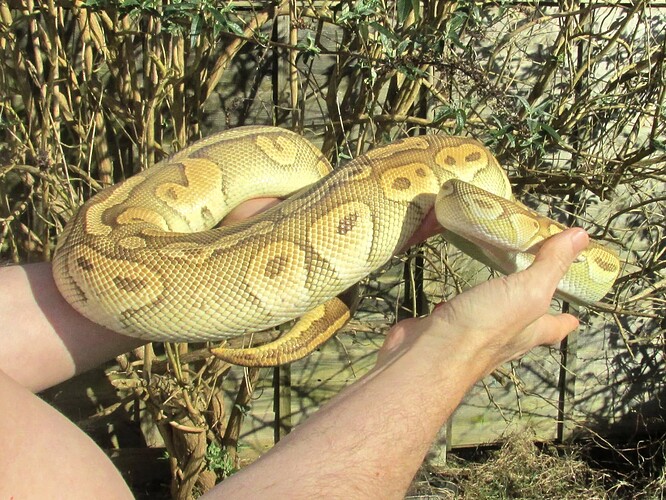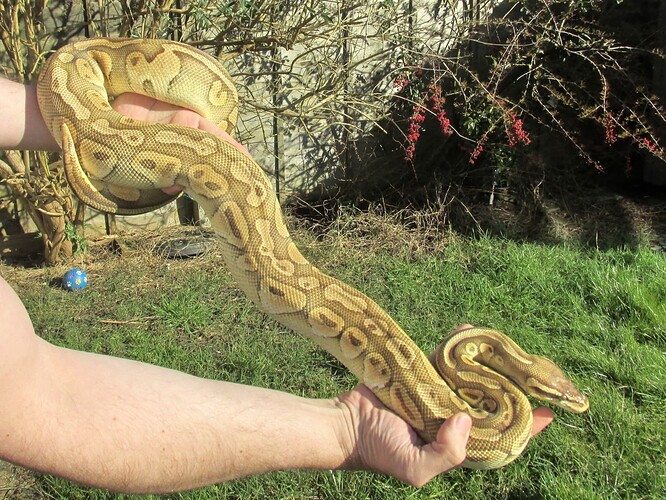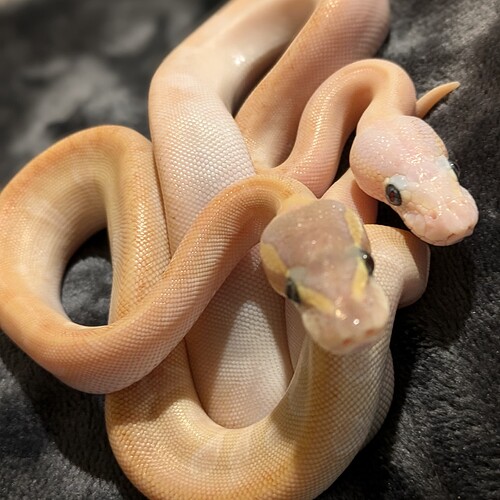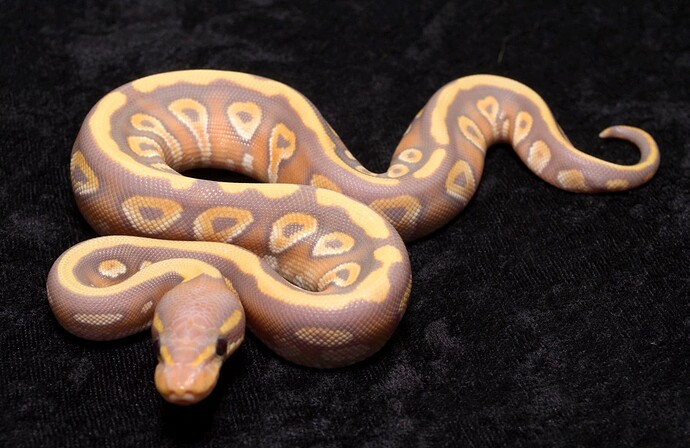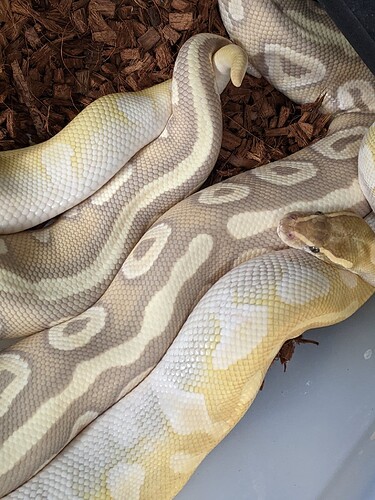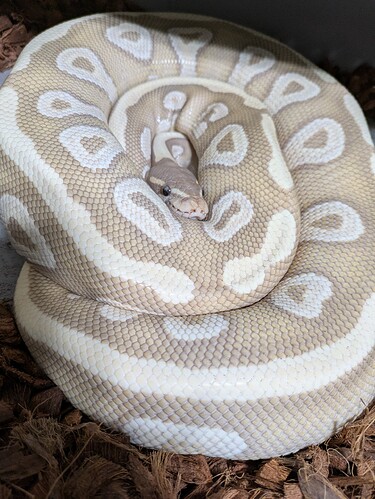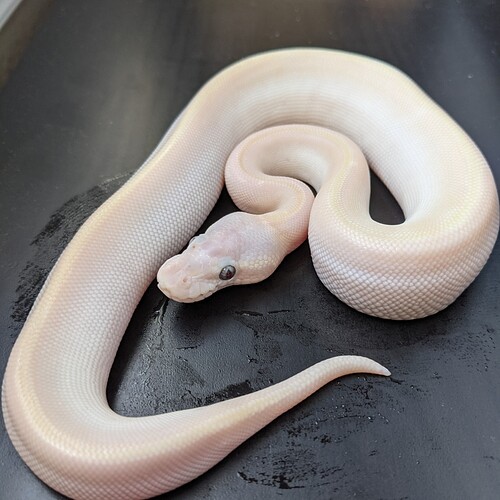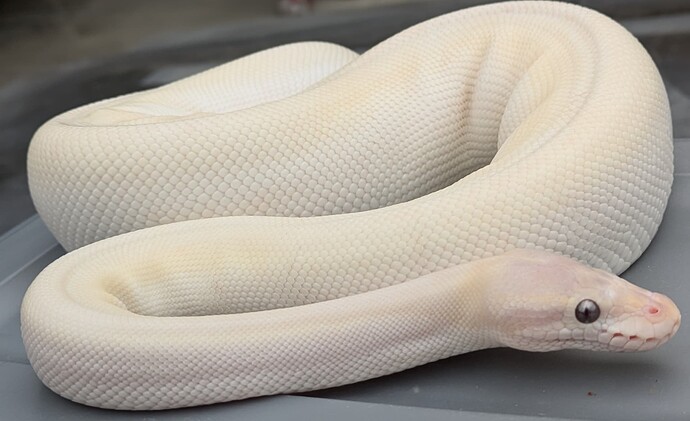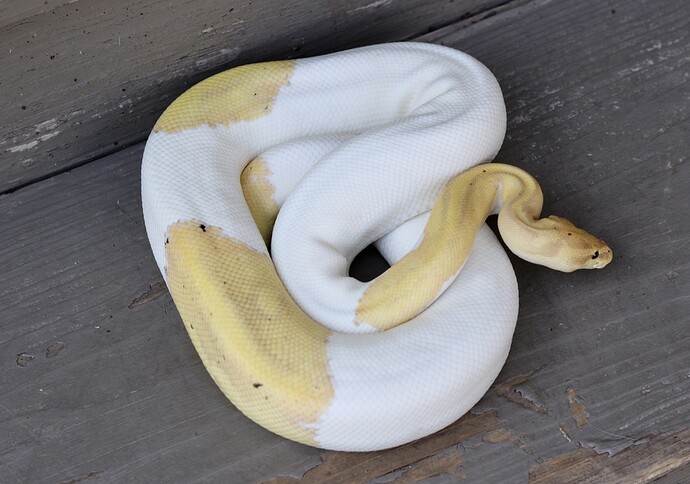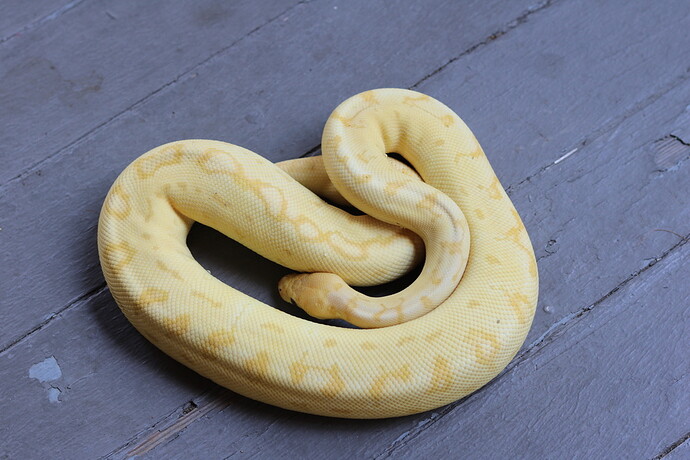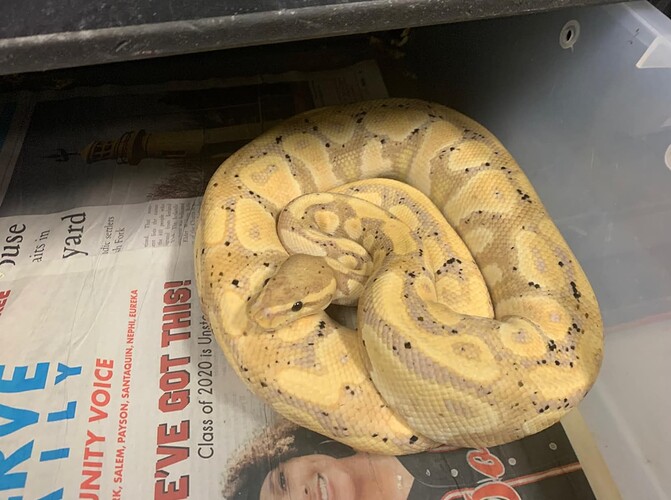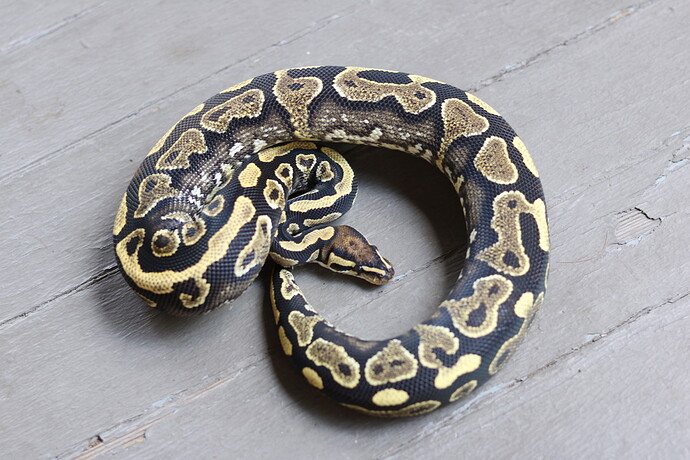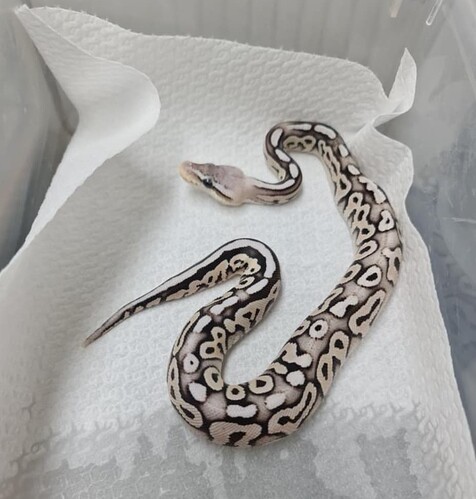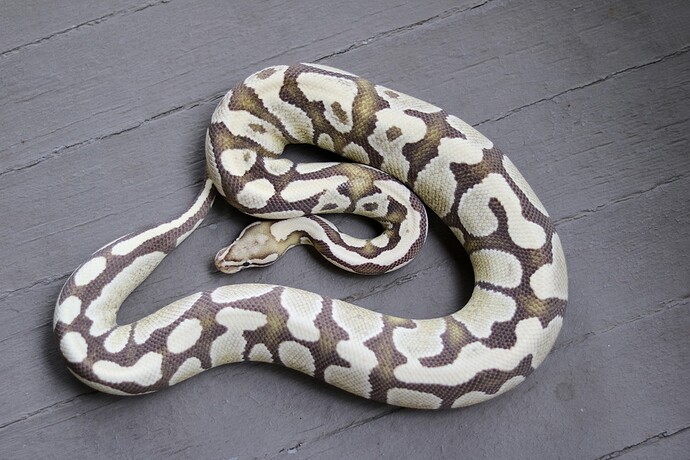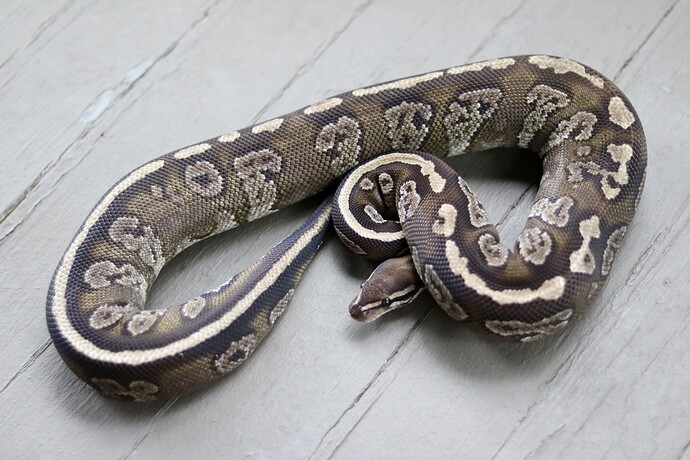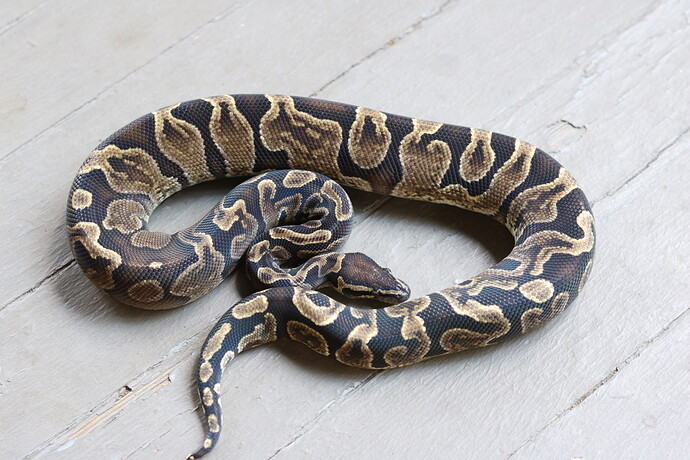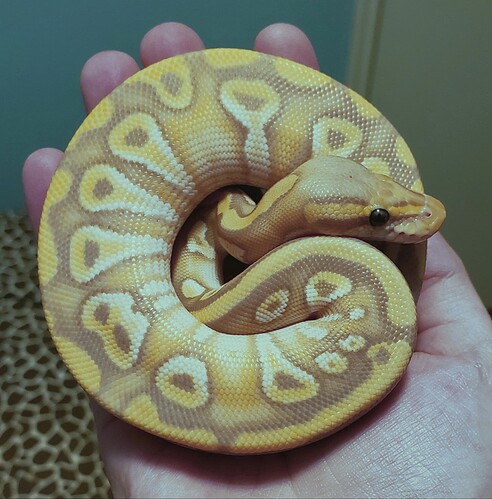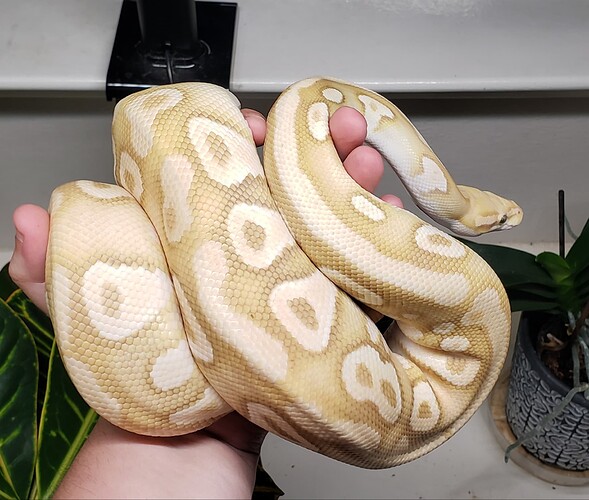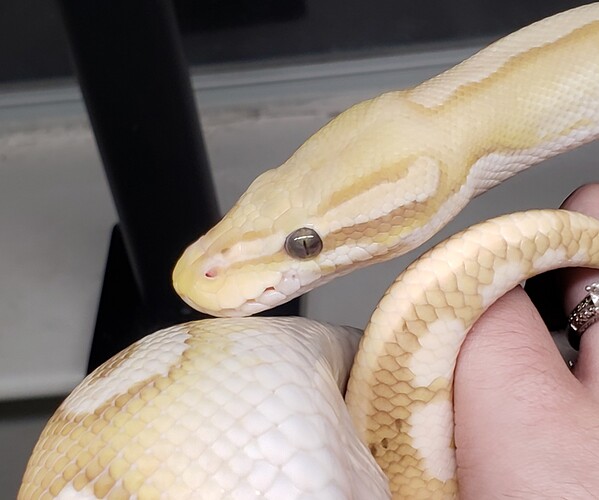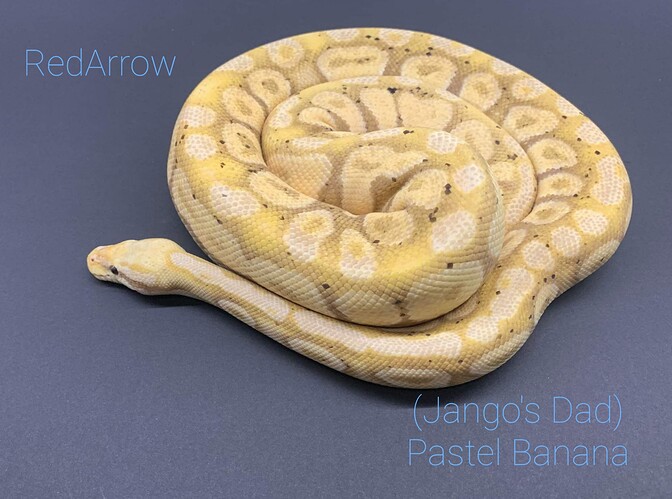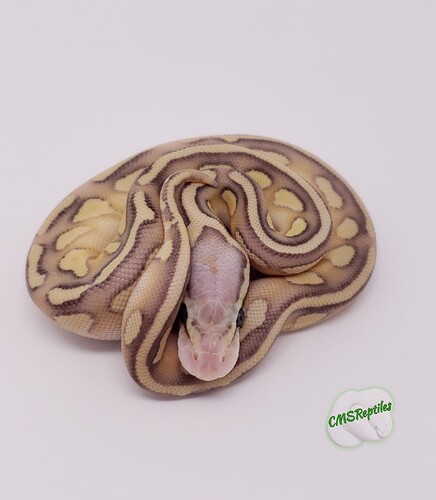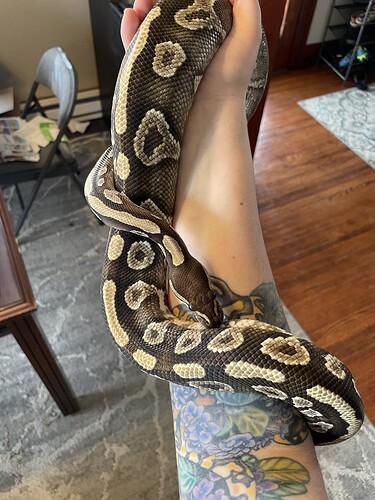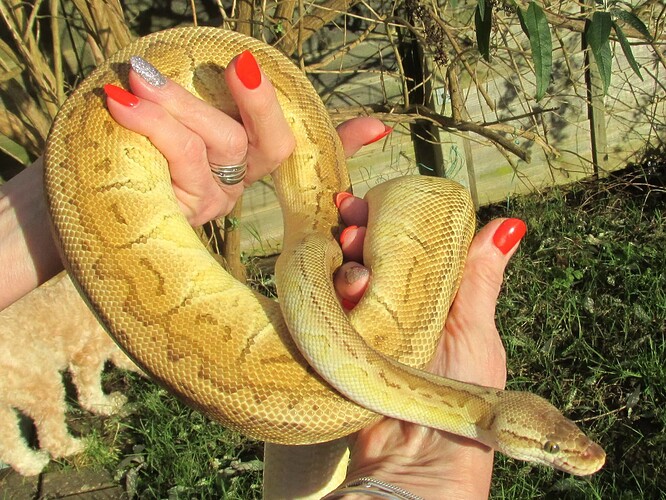So when I first started breeding, one of the most frustrating things I saw was breeders breeding really horrible-looking adults and holding back babies from them even though they weren’t a very good example of their gene(s). So when I started buying animals for breeding, I got pictures of parents and only bought animals that came from high-expression, good quality animals. I also work with a lot of enhancing genes (fire complex, yb comblex, desert ghost) to help with how they look as adults, too. But I’ve got quite a few adults I’m really happy with.
First up are Pandora and Calathea, my banana piebald het clown and banana pinstripe clown. I inquired on about 9 banana pieds and decided on Pandora, and Calathea I found on a whim but was so impressed with her parents I decided to go ahead and get her.
Pandora is almost 2kg, and Calathea is almost 1500. Both girls still have really nice, bright and soft yellows that haven’t faded out and Pandora’s purples are still purple, not brown/tan.
Here’s a picture of Pandora’s dad, a really nice adult banana with his purples and oranges still sticking around (photo credit to Remarkaballs):
I have a lace female named Hyacinth that is from one of the best examples of lace I’ve ever seen. All she is is lace yellowbelly, and I’ve seen plenty on MM that don’t look anywhere near as nice as she does at 1100g (so she’s still a subadult):
And for my desert ghost animals, I’m really proud of how they turned out as adults. My cornerstone male, Romeo, is a black pastel pastel desert ghost het amur (cryptic). He looked like this as a baby:
And this is what he looks like as a four year old adult:
Part of why I love desert ghost (and specifically good quality desert ghost) is that he’s barely changed. He’s
just as a bright as he was as a baby, as a four year old at 900g. He’s a mouser, so is a little on the small side, but man he’s also produced some gorgeous babies so far that I’m confident will age well.
Another really nice adult example of desert ghost: Enya, my fire desert ghost. She’s so light and creamy and clean.
I just got a clutch from her that are about two weeks away from hatching, so I’m very excited to see how her babies come out.
And, just good examples of genes in general: Autumn is a mojave (super) nanny, four years old, 1900g. She was bought as a super nanny but there’s been some contention as to if she’s a super (some people think the pattern should be more shattered, some folks think she’s definitely super). She is currently gravid and hopefully giving me eggs any day, so I’m hoping for some really nice quality nanny babies from her, as I’m very happy with her expression.
And then: simple. Simple genetics (good examples of them) are always amazing to have. Boreas is a GHI het pied, and he’s one of the best examples of single gene GHI that I’ve ever seen:
These are some of the babies he produced that will hopefully keep his really nice color and contrast:
Anyway! I’ve got parent pictures for the vast majority of these guys and asked for parent photos for all of them. I have many, many times elected not to buy an animal if the parents weren’t up to my standard and like I said I get a bit of ■■■■ because of that, but I’d much rather end up with good quality animals in the long run than prevent someone being annoyed with me because I asked for parent pictures and then didn’t buy. I’ve also got all of my adult breeding animals up on my Morphmarket store, so you can see all of the adult breeding animals I currently have and what they look like.
